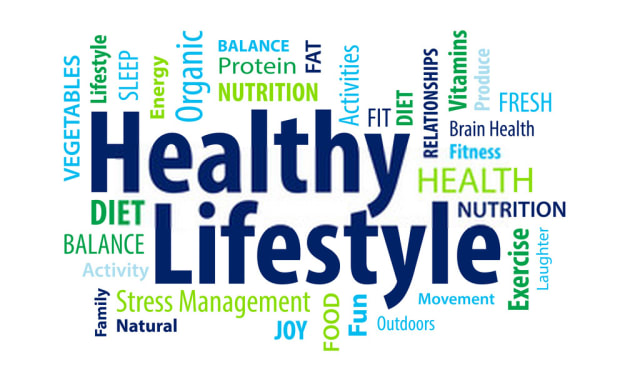Gain muscle.. Not just lose weight..
Both are not same..

Losing weight is a goal that many individuals strive for in order to improve their overall health and well-being. It involves reducing excess body fat while maintaining or preserving muscle mass. To successfully lose weight, it is important to adopt a comprehensive approach that combines dietary changes and regular physical activity. Here is a detailed explanation of the key aspects involved in losing weight:
Calorie deficit: The fundamental principle behind weight loss is creating a calorie deficit. This means consuming fewer calories than your body needs to maintain its current weight. When you consistently maintain a calorie deficit, your body turns to its stored fat reserves for energy, leading to weight loss over time. It's important to note that creating too large of a calorie deficit can be counterproductive, as it may lead to muscle loss and a slower metabolism. Gradual and sustainable weight loss is generally considered to be 1-2 pounds per week.
Balanced diet: Adopting a balanced and nutritious diet is crucial for successful weight loss. Focus on consuming a variety of whole foods that are rich in nutrients and low in calories. Include plenty of fruits, vegetables, lean proteins, whole grains, and healthy fats in your meals. These foods provide essential vitamins, minerals, and fiber while keeping you feeling full and satisfied. Avoid or limit the intake of processed foods, sugary snacks, and beverages, as they tend to be high in calories and low in nutritional value.
Portion control: Paying attention to portion sizes is key to managing calorie intake. Even healthy foods can contribute to weight gain if consumed in excessive amounts. Use smaller plates and bowls to help control portion sizes visually. Additionally, practice mindful eating by eating slowly, chewing thoroughly, and listening to your body's hunger and fullness cues. This allows you to enjoy your meals while being more aware of your body's needs.
Regular physical activity: Engaging in regular physical activity is crucial for weight loss. Aerobic exercises such as brisk walking, jogging, cycling, or swimming help burn calories and increase your overall energy expenditure. Aim for at least 150 minutes of moderate-intensity aerobic activity per week, as recommended by health guidelines. In addition to aerobic exercise, incorporating strength training exercises into your routine is beneficial for preserving muscle mass and boosting your metabolism.
Strength training: Including resistance or strength training exercises in your weight loss plan helps to preserve and build lean muscle mass. Muscle is metabolically active tissue, meaning it burns more calories at rest than fat. By increasing your muscle mass, you can increase your overall metabolic rate, which contributes to more efficient weight loss. Incorporate exercises that target all major muscle groups, such as squats, lunges, push-ups, and weightlifting. Gradually increase the intensity and weight as your strength improves.
Hydration: Staying hydrated is often overlooked but plays a crucial role in weight loss. Drinking an adequate amount of water throughout the day helps to regulate your metabolism, suppresses appetite, and can prevent overeating. Replace sugary beverages with water or opt for low-calorie options like herbal tea or infused water to reduce calorie intake.
By implementing these strategies, you can create a sustainable and effective plan for losing weight. Remember that weight loss is a gradual process, and it's important to have patience and consistency. Consult with a healthcare professional or a registered dietitian to personalize your weight loss plan based on your individual needs and health conditions.
LOOKING FOR A SIMPLE, EFFECTIVE WAY TO LOSE WEIGHT? OUR PRODUCT IS THE ANSWER – ORDER TODAY..! https://tinyurl.com/yc8bwv6x

Gaining muscle is a goal often pursued by individuals who want to increase their strength, improve their physical appearance, or enhance their athletic performance. It involves a combination of targeted exercises, proper nutrition, and sufficient recovery. Here is a detailed explanation of the key aspects involved in gaining muscle:
Resistance training: Resistance training, also known as strength or weight training, is essential for building muscle. It involves performing exercises that specifically target the muscles you want to develop. This can be achieved through various methods, such as using free weights, weight machines, resistance bands, or bodyweight exercises. Resistance training stimulates muscle fibers, leading to their growth and increased strength.
Progressive overload: To continue making gains in muscle size and strength, it is important to apply the principle of progressive overload. This means progressively increasing the demands placed on your muscles over time. You can achieve this by gradually increasing the weight, repetitions, or sets in your workouts. Progressive overload ensures that your muscles are constantly challenged and stimulated for growth.
Balanced diet: Proper nutrition is crucial for muscle growth. To support muscle development, ensure that your diet includes an adequate amount of protein, which provides the building blocks necessary for muscle repair and growth. Good sources of protein include lean meats, poultry, fish, eggs, dairy products, legumes, and plant-based proteins like tofu and tempeh. Additionally, consume sufficient carbohydrates to provide energy for intense workouts and include healthy fats for overall health and hormone regulation.
Sufficient rest and recovery: Building muscle requires more than just intense workouts. It is during rest periods that your muscles repair and grow stronger. Allow each muscle group at least 48 to 72 hours of recovery before targeting them again. Incorporate rest days into your training routine to prevent overtraining and reduce the risk of injury. Quality sleep is also crucial for muscle recovery, so aim for 7-9 hours of sleep per night.
Consistency and variety: Consistency is key when it comes to gaining muscle. Stick to a regular exercise routine that includes resistance training sessions targeting different muscle groups. Aim to train each muscle group at least twice a week. It's also important to vary your exercises to continually challenge your muscles and prevent plateaus. This can involve using different equipment, adjusting the range of motion, or trying new exercises altogether.
Proper form and technique: Performing exercises with proper form and technique is essential for maximizing muscle growth and minimizing the risk of injury. Focus on maintaining good posture, engaging the targeted muscles throughout the exercise, and using a full range of motion. If you're new to resistance training, consider working with a qualified fitness professional to learn the correct form and technique.
Supplements (optional): While not necessary, some individuals may choose to incorporate supplements into their muscle-building journey. Protein powders, creatine, and branched-chain amino acids (BCAAs) are commonly used supplements that may support muscle growth and recovery. However, it's important to remember that supplements should not replace a balanced diet and proper training.
Remember, gaining muscle is a gradual process that requires time, dedication, and consistency. Results may vary based on individual factors such as genetics and training intensity. It is recommended to consult with a certified fitness professional or a sports nutritionist to develop a personalized plan that aligns with your specific goals and needs.
LOOKING FOR A SIMPLE, EFFECTIVE WAY TO LOSE WEIGHT? OUR PRODUCT IS THE ANSWER – ORDER TODAY..! https://tinyurl.com/yc8bwv6x
In conclusion, losing weight and gaining muscle are two distinct but interconnected goals. To lose weight, it is important to create a calorie deficit through a balanced diet and regular physical activity. On the other hand, gaining muscle involves resistance training, progressive overload, proper nutrition, and adequate rest and recovery. While losing weight requires a calorie deficit, gaining muscle requires a focus on strength training and protein intake. Combining these two goals can lead to a healthier and more toned physique. Remember to approach weight loss and muscle gain with patience, consistency, and a personalized approach that suits your individual needs.






Comments
There are no comments for this story
Be the first to respond and start the conversation.